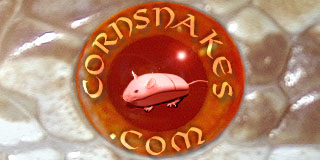Bloodredsnake
New member
I am new to all of this, i have never had a snake but i am learning about it before i get a corn snake. I wish to learn what i need to know about them before i get one. I want to get a baby corn snake and watch it grow.
Congrats on deciding on a corn. They are awesome and have a great color variety, they are hardy and most of them tolerate handling very well. You will like it a lot, it's a great experience.
I would recommend you to take a look at the stickies in the basic care and husbandry forum section and, if you can, look for a book on corn snakes, such as the one by Bill and Kathy Love or the one by Don Soderberg.
If you have questions you can always start a thread here.
When do you plan on getting it? You gonna choose a bloodred (by you nickname)?
Welcome to the forum!
THanks for your advice. That will come in handy.The book by Don Soderburg was what really got me started. It has a lot of great info. Also, a piece of advice, baby corns are pretty nervous, and, if their substrate allows it, will burrow for extended periods of time. I know it really freaked me out a few times, but it's natural your snake probably didn't escape like I thought mine had. ONce they calm down a little, they're awesome! They don't burrow as much and will usually let you handle them no problem! Best of luck!
Oops. I just saw this post was originally from November. I'm a little late to the party, but the welcome and good wishes still hold.
Getting a baby and growing it is very rewarding. Just know that it takes patience. All babies have an instinct to hide and flee big things (you), so don't be disappointed if that happens. Your snake will get used to you and you will forge a great relationship.
The books you are getting are great!
Glad you're here. Wishing you every success. Welcome to the forum! :wavey:
*Sigh* Wrong thread. Sorry. Cant edit or delete.
Not sure on all of those but as for #4, just feed them in a separate box. A Tupperware bin works well. Just drill some holes in nit and put them in there to feed them. That way, they will not automatically associate their tank opening with food. Only the box.
And for #5, The more constant you keep the temps, the better. Much of a change in the winter could lead to hibernation.
I wish I could be of more help, but I know nothing about breeding. Hope that helped!
These are a few questions about Corn snakes, I am still learning about all of this.
1. Can you raise two (one male and one female) corn baby snakes together before putting them in their own tanks?
2. Do you change their temperature even if you don’t plan to mate the snake?
3. Can they get older (since they live for 18-20) before you mate them without it harming the snake’s health?
4. What is the best way to feed them if you don’t want them to associate the opening of the tank with feeding?
5. Do you have to change the temperature of their tank during winter and summer?
6. Is a heating pad or Night time light better for snakes?
7. And if it is get hot in the room I have them in during the summer what should I do to keep them cool on the cool side of the tank?
These are a few questions about Corn snakes, I am still learning about all of this.
1. Can you raise two (one male and one female) corn baby snakes together before putting them in their own tanks?
2. Do you change their temperature even if you don’t plan to mate the snake?
3. Can they get older (since they live for 18-20) before you mate them without it harming the snake’s health?
4. What is the best way to feed them if you don’t want them to associate the opening of the tank with feeding?
5. Do you have to change the temperature of their tank during winter and summer?
6. Is a heating pad or Night time light better for snakes?
7. And if it is get hot in the room I have them in during the summer what should I do to keep them cool on the cool side of the tank?
7. If your house gets super warm in summer, turn off your heating equipment and use fans, maybe? No experience here I live in a cool climate and will probably never have to worry about this with my snakes.
Fans don't work with snakes. They don't sweat, so the air you provide has to be actually cool, otherwise you just move the hot air around. Some people try ice filled trays in front of the fan directed at the viv.
